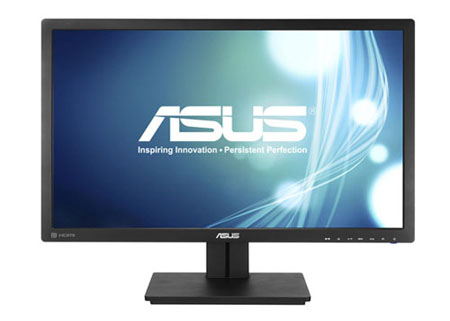HP ZR2740w Versus Asus PB278Q: QHD 27" Monitors, Tested
Until cutting-edge UHD (3840\00d72160) displays hit the mainstream, most enthusiasts have to be content with QHD monitors at 2560x1440 pixels. In the lab today, we have two more 27-inch QHD screens: the ZR2740w from HP and the PB278Q from Asus.
Similar Products For Different Markets
It seems as though prices on these high-res monitors are starting to creep downward. Aside from the significantly cheaper Auria EQ276W, the Asus and HP monitors in this review are less expensive than much of the competition, which was still solidly over $700 at the time of this writing.
Despite its lack of calibration controls, the HP ZR2740w displays solid color accuracy and superb contrast. Regardless of the content you choose to display, the HP delivers excellent contrast and natural color. And there is more than enough brightness available, enough to turn this panel up to a searing level. In fact, it’s the brightest screen we’ve ever measured. Its only real limitation is input resolution. The HP will only accept 1440p, 720p, or 480p. If you play games at resolutions other than those, there is no workaround. Obviously, gaming at 1440p requires some extra power in the graphics card department as well. Consider that carefully before buying this monitor. However, if you do have the juice to handle it, your games will look great. It’s not the speediest panel we’ve tested, but the majority of players will be satisfied with the ZR2740w’s performance.
The Asus PB278Q is the polar opposite insofar as adjustments, providing more than we’ve ever seen in a computer monitor. The high and low white balance controls are quite unique, as are the color and tint sliders (which we’ve never seen outside of a television set). Calibrated performance is superb, right up there with the best. Out-of-box performance, however, is slightly behind other panels we’ve tested. If you have access to the equipment, we strongly recommend having this monitor calibrated. Of course, we recommend this for any monitor that sits on your desk. Your eyes will thank you in the long run. The Asus also offers plenty of available brightness and decent contrast, no matter what the ambient light level. Like the HP, color is also very accurate and natural. We’d have no trouble living with either screen on our desks.
No matter which panel you choose, you can expect a high-contrast image with excellent color accuracy and sharp detail. Both screens are well-built and should stand up to long-term use. Their installation flexibility is excellent thanks to well-designed bases and VESA mount compatibility. Both are styled simply and functionally, and should blend into any environment, whether it be oriented towards productivity or entertainment. While they still command a price premium over 1080p monitors, the gap is slowly narrowing. With UHD (Ultra HD, 4K, or 2160p) just around the corner, QHD represents the highest pixel count that you can put on your desktop right now.
Get Tom's Hardware's best news and in-depth reviews, straight to your inbox.
Current page: Similar Products For Different Markets
Prev Page Results: Pixel Response And Input Lag
Christian Eberle is a Contributing Editor for Tom's Hardware US. He's a veteran reviewer of A/V equipment, specializing in monitors. Christian began his obsession with tech when he built his first PC in 1991, a 286 running DOS 3.0 at a blazing 12MHz. In 2006, he undertook training from the Imaging Science Foundation in video calibration and testing and thus started a passion for precise imaging that persists to this day. He is also a professional musician with a degree from the New England Conservatory as a classical bassoonist which he used to good effect as a performer with the West Point Army Band from 1987 to 2013. He enjoys watching movies and listening to high-end audio in his custom-built home theater and can be seen riding trails near his home on a race-ready ICE VTX recumbent trike. Christian enjoys the endless summer in Florida where he lives with his wife and Chihuahua and plays with orchestras around the state.

